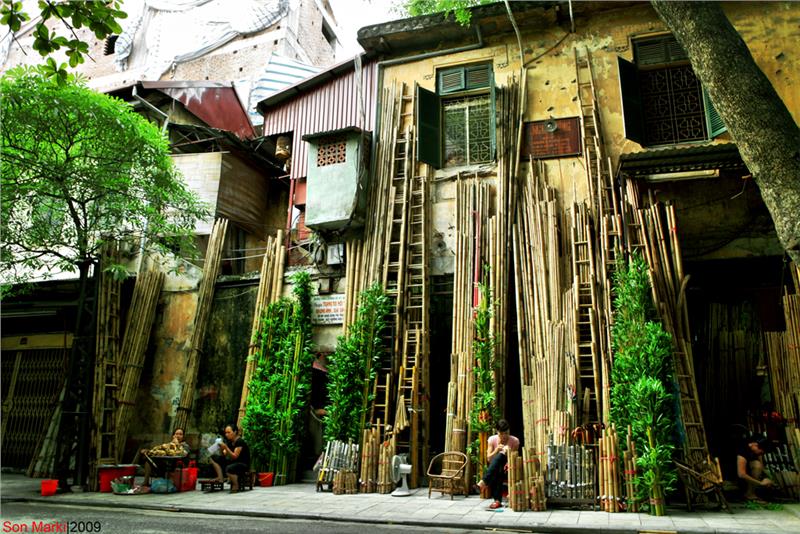| Mon | Tue | Wed | Thu | Fri | Sat | Sun |
|---|---|---|---|---|---|---|
In the past, the economy was mainly agriculture; therefore the majority of local people were farmers. Peasants in North Delta in general and in Hanoi in particular built their own houses suitable for traditional culture, labor life and climate in Vietnam. Those houses have become the symbol of Hanoi for a long time. But today, rural areas are being rapidly urbanized and housing demand is increasing dramatically. Traditional ancient houses are lost and replaced by reinforced concrete house which are fully furnished. Therefore, the management and conservation of traditional values require authorities and the local to be more responsible and voluntary to restore and preserve those houses.

According to architect To Thi Toan, Vice Chairman of Hanoi Association of Architects, in addition to ancient houses in Hanoi Old Quarter, there are many others in rural districts formerly located in Ha Tay. This is a place famous for national heritages and relics including ancient villages, craft villages, temples, pagodas, and so on. In particular, Duong Lam Ancient Village in Son Tay Town has more ancient villages than elsewhere. Here, ancient roads, village gates, alleys, and folk houses dated back to hundreds of years ago still persist. Besides, ancient houses are also located in other villages such as villages of Cu Da in Thanh Oai District, Da Si and Van Phuc in Ha Dong District.
According to a survey of Vietnam Association of Architect, Hanoi ancient houses are in possession of basic characteristics similar to traditional folk houses in North Delta. Those characteristics are especially shown in wooden houses having sloping roofs in both sides, large campus including a main room, sub-rooms, a gate, a fence surrounding the garden, a well, and a pond behind the houses. Houses in different locations differ in decoration, sculpture, and structure of gate and wall.

From actual surveys, architects and experts in urban management believe that conserving and developing Hanoi ancient houses are urgent, frequent and long-term, but also very difficult and complicated. The conservation has to go along with improving the living conditions of the local in those houses. Therefore, architects and experts have proposed that authorities in Hanoi should implement practical policies for local people, especially major policies in preservation, conservation, expansion and development. Accordingly, conservation should be divided into levels: houses of status quo maintain, houses of partial improvement, and houses of new construction approved by the government. It is said that some ancient villages like Duong Lam, Mong Phu, Cam Thinh require to be preserved as living museums. Those are the archetypal images of old villages with the meaning honoring the past and becoming fascinating attractions of Hanoi tourism.
Sorry, System is updating. Please, press SEARCH NOW

 Đặt vé máy bay cho người Việt?
Bấm vào đây
Đặt vé máy bay cho người Việt?
Bấm vào đây
Our service uses cookies for technical, analytical and marketing purposes. See our Cookie và Privacy policies for more information. If you agree to this, just keep browsing.
